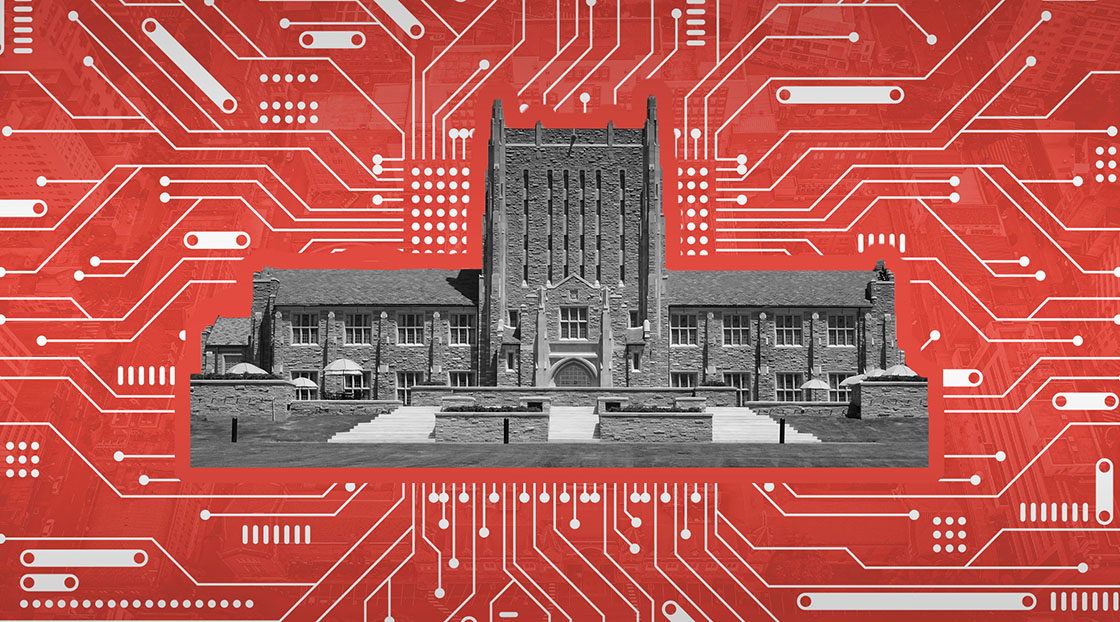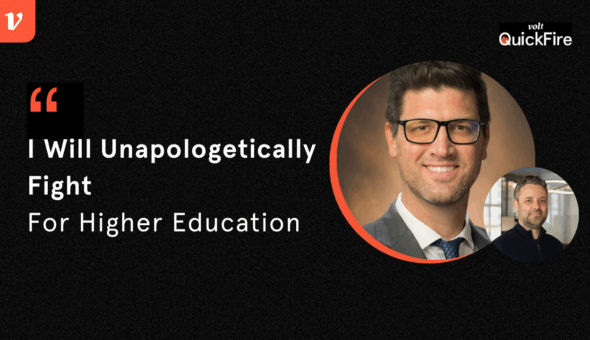Although seemingly confined to Hollywood, the ongoing writer and actor strike regarding the use of artificial intelligence, among other issues, has prompted many professionals to consider ways to engage with the technology ethically. From chatbots to generative AI text programs, three leaders in higher ed told us how they effectively infuse AI into their day-to-day tasks, while one cautioned that equity may not be in AI’s current vocabulary.
Mallory Willsea with Element451, an AI-powered all-in-one student engagement CRM based in Raleigh, North Carolina, believes chatbots and AI are a tool, not a replacement, for an individual’s job or career. According to Willsea, many institutions rely on smaller teams and departments in 2023, compared to previous years, which may benefit from the extra resources AI provides.
“If you have all of these open positions, it means the individuals left behind are wearing more hats than ever before,” said Willsea. “To be able to personalize messages at scale to an entire audience when a team of three is doing what a team of ten is supposed to be doing, AI can help to solve quite a few of these challenges.”
Potential Use
Circumventing the need for developer input generative AI chatbots can be executed by university staff and easily maintained by using current resources. Staff using BoltBot, Element451’s chatbot built on OpenAI, for example, can preload links from university websites for the system to use as reference material. The information BoltBot shares with the user will be accurate if the website information is up-to-date and correct.
“What was maybe eight hours of work is now less than two hours,” said Willsea. “You get six hours back in your day to do higher-level activities.”
Shane Baglini, a regular contributor to Volt, is the senior director of marketing and recruitment for Muhlenberg College’s Division of Graduate and Continuing Education. Muhlenberg College is one of the institutions benefiting firsthand from the services provided by a student engagement CRM that utilizes AI.
When asked if he is currently using AI in his role, Baglini happily shared, “Yes! Actually, earlier—just before this call—I was utilizing AI.”
He explained how various AI programs assist with his team’s daily efficiency.
“We are using it to generate ideas, give some folks who might not necessarily have a background in writing a starting point for that,” said Baglini. “We’re a small staff fielding a lot of inquiries that are frequently asked questions.”
One of those frequent questions is inquiries about the college’s tuition. Baglini explained that the team uses a generative AI chatbot on their websites for these inquiries “so advisors and deans can focus more on further-down-the-funnel students and student issues.”
Baglini said, “I think for teams like ours, I wouldn’t say it’s necessary, I’d say it’s extremely beneficial if you can use it in the right way because it can free up time for other things.”
Chatbots are just one of many potential uses for the newest iteration of artificial intelligence. Programs, such as Taskade and neurons, can help enrollment and marketing professionals with mind-mapping, survey development and attention scoring, while Pi can be used as a personal AI assistant to help with brain-storming ideas or working through a task.
Going a step further, marketers can use stacking, which layers multiple AI programs to produce a single piece of content. For example, a small team could use syllaby.io to develop a social media script. Then, the team could run the script through synthesia.io for a video complete with avatars, before finally using repurpose.io to develop and distribute the videos for specific contexts.
Similarly, Dr. Roger Barascout, associate dean of strategic initiatives at C.T. Bauer College of Business, University of Houston*, shared how he hopes to use AI technology to assist in interacting with alumni from various decades.
A recent alum, who now works at a marketing and public relations agency, showed the Bauer team how ChatGPT can be used to create prompts. After viewing the presentation, Barascout believes the software could be a communication tool for alumni relations within higher education.
“The type of language we use depends on our audience,” said Barascout. “For us, we must be able to tap in, to communicate, be related to those who have just graduated and are 22 years old, and those alumni who are 90 years old.”
Not Right For Everyone
Generative AI can make people’s jobs more efficient and manageable, but not every higher ed role can or will benefit from the new technology. Working remotely from her home, Michelle LeClerc teaches The Art of Infographics to undergraduate students at an east-coast university.
“So far, I am avoiding AI,” said LeClerc. “In terms of the classroom, it could be helpful to double-check the work you’ve done to make sure you hadn’t missed anything. In terms of using it to review student work or for teaching exclusively, I feel there are a lot of problems with that. It would need to be adjusted for several factors, such as equity.”
Many traditional chatbots include preprogrammed prompts, which developers input based on the top five or ten variations for each question users ask. LeClerc noted the possible effects based on the knowledge—or lack of knowledge—of chatbots concerning slang, vernacular and colloquialisms.
“Since it only knows what we’ve fed into it, it only knows what currently exists,” LeClerc stated.
If the programmers do not feed colloquialisms and vernacular variations to the chatbot, in theory, the program may not know how to interpret the student’s input language. In turn, the chatbot will not accurately interact with the student, which could cause issues regarding equity.
The latest generative AI programs are supposed to circumnavigate the limited preprogrammed prompts and use a cumulative knowledge approach from the information fed into the system. However, recent backlash following a depiction of Barbies from around the world, created by the generative AI design program MidJourney and posted on Buzzfeed, highlighted the possible inequities and stereotypes about which LeClerc and others caution.
Whether fine-tuning AI and granting the programs access to more information will remove the concerns of equity and access remains to be seen. While the use of AI varies within the industry, the majority believe that AI should be treated as a tool to assist with daily tasks.
“Now, and into the future, [AI] is a generative tool that is going to be easy to implement, easy to maintain, and you will actually trust it,” said Willsea.
* Editor’s note: C.T. Bauer College of Business with the University of Houston is a client of eCity Interactive, which publishes Volt. This interview was conducted independently of the agency’s relationship with the university.









